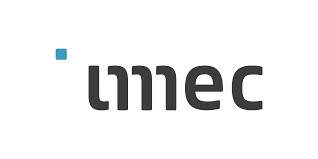Avantama
 Switzerland-based Avantama AG (previously called NanoGrade) is specialized in the development and supply of printable and coatable materials for the manufacturing of optical or electronic thin films. Avantama's materials are based on liquid formulations and inks containing semiconducting metal oxides or luminescent perovskite quantum dots.
Switzerland-based Avantama AG (previously called NanoGrade) is specialized in the development and supply of printable and coatable materials for the manufacturing of optical or electronic thin films. Avantama's materials are based on liquid formulations and inks containing semiconducting metal oxides or luminescent perovskite quantum dots.
In November 2024, as part of a move to bring Avantama’s pQD market-ready technology into the hands of a company with market and customer access, Avantama decided to sell its pQD IP portfolio and related know-how and manufacturing assets.
Avantama's QDs show several differences when compared to other commercial QDs (CdSe and InP): the chemical composition is based on metal halide perovskites such as e.g. CsPbBr3, the QD color is mainly controlled by the chemical composition and not by the QD size, no additional inorganic shell is needed for high quantum efficiency and stability and more.



 Imec is a leading independent nanoelectronics and digital technologies R&D hub with headquarters in Belgium.
Imec is a leading independent nanoelectronics and digital technologies R&D hub with headquarters in Belgium. KEP Technologies is a family-owned international industrial group that offers its customers and partners the implementation of industrial and technological solutions. It develops the 3 vectors that distinguish the Group: Innovation, International Presence and Diversification.
KEP Technologies is a family-owned international industrial group that offers its customers and partners the implementation of industrial and technological solutions. It develops the 3 vectors that distinguish the Group: Innovation, International Presence and Diversification.
 NexWafe is Germany-based wafer manufacturer that was spun out from Fraunhofer Institute for Solar Energy Systems ISE in 2015 and is a member of the Ultra Low-Carbon Solar Alliance, Solar Power Europe, and the European Solar Manufacturing Council.
NexWafe is Germany-based wafer manufacturer that was spun out from Fraunhofer Institute for Solar Energy Systems ISE in 2015 and is a member of the Ultra Low-Carbon Solar Alliance, Solar Power Europe, and the European Solar Manufacturing Council.
